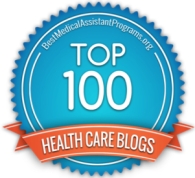When I was a young violin student I had to change violin sizes at various times as I grew. Each time felt funny, and each time my teacher would say “You’ll get used to it”. The Affordable Care Act, i.e ACA, i.e Obamacare, is now hated by fewer people. Only 43% of Americans oppose it, down from 53%. Pundits are saying this is because the recent open enrollment period went smoothly. That may be true, but if we take a lesson from history we can see that slow acceptance of the ACA is to be expected. We’ve gotten used to it.
Take, for example, the New Deal. The New Deal was a set of laws enacted in the wake of the Great Depression. These laws resulted in policies and institutions such as the FDIC, the criminalization of child labor, the Fair Labor Standards Act that established the 40 hour work week, and Social Security. Most people today would consider much of the New Deal to have been a pretty good idea. But that was not the case in the 1930s when these laws were passed. Rich people didn’t like it. Republicans didn’t like it (they thought the Social Security Act smacked of socialism. Funny, huh?). Conservatives thought there was too much infringement on individual rights. A third of the public didn’t like it, as judged from the 1936 election. Doomsday predictions claimed that the legislation would take away human rights, create too much big government, and ruin the constitution. Some would still argue that these predictions came true to some extent, but no one wants a repeal of child labor laws, and Social Security is now a political third rail.
In the case of the ACA, the opposition has been remarkably similar. Infringement on individual rights, states rights, big government, socialism, unconstitutionality, all these accusations have been thrown at the ACA. Additionally we have been told that the ACA would bankrupt the government, limit physician choice, and establish death panels. Some of these claims are still under review. But health care spending has gone down, more people have access to health care, and no death panels have materialized.
Parts of both the New Deal and the ACA either didn’t work or were deemed unconstitutional. But some parts stayed, and eventually became part of life in America. People got used to it. Just as people are getting used to the ACA.
As Congressional Republicans are acutely aware, it is much easier to prevent something from happening than it is to take it away once it has happened. This fact is based in the human tendency to give much more weight to loss than gain. We see this in end-of-life discussions, where doctors find it is more painful for families to decide to remove life support than to decide not to institute it. Such tendencies can be positive or negative. At work it is well known that once a new rule gets instituted we’re stuck with it; a rule, once made, is virtually impossible to get rid of, even if it doesn’t have the desired effect. Standardized testing in public schools is here to stay too, even though such testing has been shown to be a poor measure of real learning. On the other hand, a rule that works and makes sense, like a seat belt law, will also never go away, and eventually people get used to it and lives are saved. Once people got used to Social Security it became impossible to take it away. Once people get used to having insurance it will eventually become impossible to take it away.
Once something becomes status quo people tend to forget what they were so worried about.

